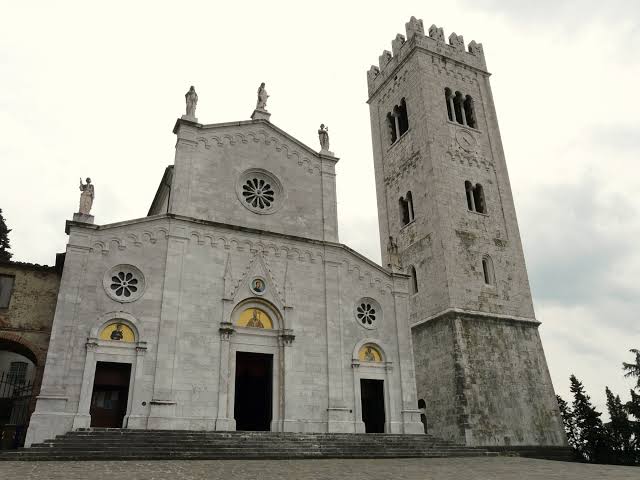Feast of St. Giusto – November 2, 2022, history, significance,
The Feast of San Giusto is on November 2 and is a public holiday in Trieste, a northeastern Italian city where San Giusto or Saint Justus of Trieste is the patron saint. In Sicily, he is the patron saint of Albona (Istria), San Giusto Canavese, and Misilmeri. Due to religious considerations, the celebration takes place the next day. Thus, November 3 is when the feast holds.
HISTORY OF FEAST OF ST. GIUSTO

The Roman Emperors began to take stringent measures against Christians toward the end of 200 A.D. Previously thought to be a harmless group, the emperors began harassing and killing those who refused to abandon their beliefs.
Many of these early Christian martyrs became canonized; towns and villages across Europe held festivals in honor of their favorite or patron saints on their feast days.
Justus lived near Trieste during Emperor Diocletian’s reign (284 to 305 A.D.) and had converted to Christianity. Most citizens were aware of and unconcerned by Justus’ odd faith.
He was brought to the Roman authorities and implicated in sacrilegious acts despite his stellar reputation, or perhaps because of it. The Emperor had commanded that all Christians offer sacrifices to the gods; anyone who refused risked undergoing execution.
Mannacio, the local governor, summoned Justus and demanded that he make a sacrifice to pagan Roman gods, which he refused. Mannacio had Justus whipped and imprisoned to force him to reconsider his decision.
He faced trial under Roman law. He was found guilty and sentenced to death by drowning because he continued to refuse to sacrifice to the Roman gods. According to local traditions, he was thrown from a small vessel into the Gulf of Trieste, just offshore of the present-day Promontory of Sant’Andrea.
In a dream on the night of Justus’ death, Sebastian the priest saw a vision that Justus’ body had washed ashore despite the weights that were supposed to keep it in place. Sebastian assembled his fellow Christians to find his body, which they discovered at ‘Riva Grumula.’ They buried Justus along the beach where they found his body.
Later in the fifth century, they moved his body to a hill and erected a Christian basilica in his honor.
FEAST OF ST. GIUSTO TIMELINE
293 A.D.
Thrown Into The Gulf
Justus is thrown into the Gulf for alleged sacrilegious crimes on November 2.
5th Century
Transfer To The Hills
The Saint’s body gets transferred to a hill that would later house the cathedral built in his honor.
10th Century
His Sanctums Move To The Cathedral
St. Giusto’s shrines move to the basilica dedicated to him.
1984
The Bronze Statue
Tristano Alberti’s bronze statue of St. Giusto is sub-merged in the present-day Miramare Marine Reserve.
HOW TO OBSERVE FEAST OF ST. GIUSTO
Visit Trieste
Trieste, a beautiful city in Italy, is one of the wealthiest regions in the country. Visit to gain a wholesome experience of the Feast of St. Giusto.
Attend mass
Traditional celebrations involve attending mass followed by solemn celebrations. Pay your respects by attending mass in the morning and inviting friends to join you for lunch.
Learn more about matyrs
All martyrs are considered saints; many of their remains end up in shrines as relics. Use this observance to learn more about Christian saints and how to celebrate them.
5 FACTS ABOUT SAINTS
Trial by fire
St. Francis of Assisi was said to have challenged a Sultan to a trial by fire.
Vacation
St. Fabian became the Pope while still on vacation.
Modern Saints
In 1958, Pope Pius XII named a patron saint of Television Writers ―St. Clare of Assisi.
Floating statue
The statue of St. Giusto now sits inside a transparent plexiglass cylinder filled with water, symbolizing St. Giusto’s martyrdom.
Seeking advice
St. Ignatius of Loyola was said to have asked a donkey if he should commit murder.
WHY FEAST OF ST. GIUSTO IS IMPORTANT
Tasty cuisine
From boiled meat, goulash, and sausages to the iconic cooked ham, Trieste boasts a wide variety of delicacies. Expect to see foods like horseradish and sauerkraut, as its culinary history has a lot in common with Austrian and Hungarian cuisines.
Martyrs are of importance in Christianity
Christ’s death and resurrection are the most significant concepts in Christianity, and martyrdom imitates those. That is why stories of devoted Christians like St. Giusto are cherished.
Leadership figures
Most martyrs are revered by their followers and become figureheads and sources of inspiration in the face of adversity. Martyrs play an important role in many religions.
Sandeep Raiza — Content Writer, Website Designer, SEO Strategist, and WordPress Expert AI specialist delivering impactful digital solutions that drive business growth.Combining creative storytelling with technical expertise.




